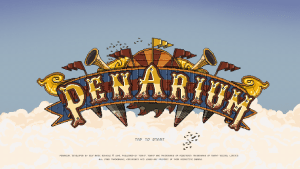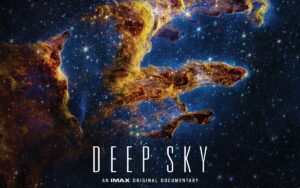by Robert Yehling
After a six-year run as the darlings of convenience-oriented and cost-conscious readers worldwide, e-books and e-readers have topped the mountain that once threatened to encompass all of publishing. Now a downward descent has begun from a high point of 35 percent of all publishing sales, thanks to a predictable crowd, persistent readers who proved their loyalty to the printed page, and an unpredictable one — students globally who wanted to read more words on paper, or at least have them as an option to go with digitized textbooks, websites, bulletin boards, and other device-fueled means of learning.
Now, the industry turns to the next digital solution: Platforms. “We are seeing an explosion of platforms, of ways of presenting digital material,” said Kirsten Wendt of Kindle Direct Publishing at the Frankfurt Book Fair, the world’s largest, which took place October 14-18 in Germany. “After focusing so much on getting materials digitized and onto e-readers, we are now asking the question, ‘How do we want the materials shown to us — and how deep can our experience be from them?’”
With Digital Book World and its very fitting theme, ‘Strategies for the Digital Transform-ation,’ coming to New York March 7-9 (I&T Today is a media partner), we attended the Frankfurt Book Fair to peer into a future that arrived as fast as e-book sales peaked — which is to say, roughly the speed of hitting ‘send’. We also participated in a discussion on future monetization and content distribution on digital platforms, and realized something: as the industry shakes itself out, the future appears to be wrapped around presentation and depth, as well as options.
The forums, conversations, and panel discussions were plentiful in Frankfurt, just like everything else. Especially print. While digital continues to grow, this expo made one thing clear: Our 570-year-old love affair with printed books will never end. The most killer and game-changing technology in human history — the printing press — remains king, no matter what other platforms might try to dethrone it.
However, because of digital platforms, more people than ever are writing and reading.
Frankfurt has become the world’s meeting place for publishing; more than 150,000 people from 125-plus countries attended to see publishers from 86 nations at Frankfurt Messe, covering more than 1.5 million square feet of floor space. This included robust English-language, Digital Hot Zone, children’s, newspaper and magazine, and guest country (Indonesia) platform sections. There was even a nod to Comic-Con, as the YA sci-fi and fantasy area below the press center was packed with thousands of costumed teens and young adults for the final two days. Speaking of which, one American visitor was astonished to see tens of thousands of teenagers fully engaged at a book fair, as if there was a world outside video games. It reflected Europe’s continuous focus on reading and learning as fun and work, a very refreshing sight.
It also included one of the most incredible antiquarian book exhibits ever presented at a book fair. When you’re reading through Galileo’s astronomy book that turned the Pope and Vatican upside down more than 500 years ago — in Galileo’s hand — or the first books Johann Gutenberg churned out from his press 10 miles up the road from Frankfurt in circa 1440, you know you’ve died and gone to literary heaven.
As for the digital issues touched upon, or covered, at Frankfurt, we received a dazzling preview of what to expect in more extensive context at Digital Book World:
- The next generation of digitized textbooks: smarter, more responsive and collaborative, more media elements, greater tools — and interaction from teachers and even students in updating content. Think Wikipedia, but with better filters to sift out inaccuracies. The bottom line? Digital textbooks are no longer products. They are services.
- E-book personalization and watermarking: Photographers have been proficient copyright water markers for years. Now, thanks to companies like Booxstream, e-book owners and small publishers can personalize and watermark as well.
- Customized stories and pictures: Children’s books are about to shift wildly on the digital stage, as technology emerges that allows parents and children to ‘continue’ or even create alternate paths to stories, in effect writing their own segments. In addition, publishers in Europe are utilizing tools to give children more interactive experiences within the books they read.
- Choosing formats: A Spanish company, Btwinbooks, enables readers to look at print and digital versions of books side-by-side, and then choose which format they prefer.
- More mass-scale distribution platforms: Canadian company Pressreader now distributes more than 4,000 magazines and newspapers digitally — the largest client list in the world. It, and the other companies (such as Zinio), continue to support more and more interactivity within the titles they distribute.
- Self-curated digital libraries: WJ Bookclub demonstrated a model that enables readers ages 6 and up to curate their own digital libraries — adding photos, descriptions and other media to deepen and explain their title choices.
- Monetizing content: At least 30 exhibitors around the Digital Zones touted cross-channel distribution, customer segmentation and acquisition, and repurposing tools to feed into the wave we’re beginning to ride in digital publishing in these customer-driven times: creating unique money-making vehicles for our content, and not concerning ourselves with other models.
- Customized magazines: Yesterday’s brand-specific magazines are today’s person-specific digital mags, thanks to technologies such as Flipboard, Flipsnack, paper.li, and others on which you can literally create your own magazine — and be ready to link to a digitized distribution platform.
- Text-to-speech: This demonstration rocked, and indicated a very disruptive move in the years ahead. When this technology is refined, you will literally be able to write an article, paper or book, run it through software — and have a solid audio book or file in your hands. That is going to make the already robust audio book world explode.
There were numerous other examples (see our website for a longer list), all of which led to the next question: How do we import these technologies and tools into our strategies? Our business plans? Our publishing, reading, teaching, or writing models?
A good first step would be to attend Digital Book World Conference + Expo at the New York Hilton Midtown. The conference will focus on using metadata, networking, content marketing, consumer behavior studies, consumer interactivity, and the tools presented above — and more — to shape products, services, and models that carry across multiple platforms. Not only that, but, as Frankfurt indicated, each platform will provide its own rich (and increasingly interactive) experience while feeding the larger objective: how a publisher, educator, or creator wants to showcase to the world.
Never has the publishing world seemed more accessible — or more exciting.
Not only was the book world on display at the Frankfurt Book Fair, but also the many shapes, sizes and forms of books and publishing technology (Top to bottom) The Blue Sofa featured great author conversations throughout the show; German Chancellor Angela Merkel discusses the state of the book marketplace in her country; the Antiquarian Book Fair offered titles dating back to the 1460s; crowded exhibits filled nearly 2 million square feet of floor space.
Indeed, the publishing world is packed. Our recent visit to the Frankfurt Book Fair revealed more than 50 distinct content platforms. It will be no different at DBW, as publishers, authors, and companies seek dynamic ways to engage audiences amidst a blizzard of new content vying for those eyeballs.
That’s where media visionary Sherisse Hawkins and her Colorado-based company, Beneath the Ink, step up. For the past couple of years, since a Shark Tank appearance, Hawkins and her team have built robust, dynamic platforms to redefine our relationship with what we write and read: first the Binks platform, and now, Pagedip. The publishing tools come with third-party integration, content libraries, custom templates, calls to action, and interactive elements. They’re changing the face of online corporate, publishing, and entrepreneurial communication. It’s like curating as well as publishing your material.
“Binks and Pagedip create an entirely new dimension to the content creating and reading experience,” Hawkins said. “This is an amazing advantage for corporations, publishers, and authors trying to show their creativity and reach their audiences in new and different ways.”
Hawkins knows how to balance content, delivery, and audience experience. Prior to forming Beneath the Ink, she worked at Time-Warner Cable and Walt Disney Imagineering, focusing on user experience. “How do you make something technically difficult acceptable to people who can really move their content and creative view forward without having to worry about how it’s happening behind the scenes?”
she asked.
Here’s how: By building portals that allow users to import their content, and taking advantage of easy features to add in video, audio, photos, side content, pushing it directly to customer or audience bases, and turning it into a wholesome, intuitive reading experience. What’s more, Binks and Pagedip are versatile: the platforms are equally effective for corporate documents, publications, e-books, e-textbooks, or extending print books.
This hits home for authors and content creators. How many times do we create something, like a book, newsletter, or branded magazine, and feel like we left out great backstory, research, or video or audio? Not anymore. Binks and Pagedip also overcome the biggest objection to enhanced (multimedia) e-books now produced by some publishers: hiking through thickets of unwanted links and content before reaching what we want.
“We hear about how intrusive this experience can be, how they have to read around images, or videos, or links that require reading extra adjacent material,” Hawkins said. “This offers a new dimension entirely — more elegant, deeper, richer, more intuitive, more expanded content. You feel like you can see and touch it. The feedback we’ve gotten on this is amazing, with every iteration of our portal.”
Once again, Beneath the Ink will be a featured participant at Digital Book World. They wowed the crowd in 2015 with their Binks solution. Now comes Pagedip, which truly has the potential to accelerate online publishing’s evolution.
Since appearing on Shark Tank, Beneath The Ink has shaken up conventional e-publishing with its Binks and Pagedip platforms. Now, whether publishing a newsletter or book, you can customize core and peripheral content, create any design you want, and blast it on social media — from one source.












